- Home
- William Shakespeare
The Oxford Shakespeare: The Complete Works Page 7
The Oxford Shakespeare: The Complete Works Read online
Page 7
thou’lt do.
Woot weep, woot fight, woot fast, woot tear thyself,
Woot drink up eisel, eat a crocodile?
I’ll do’t. Dost thou come here to whine,
To outface me with leaping in her grave?
Woot, often edited as woo’t, is a colloquial form of wilt or wouldst thou. It is a rare literary usage, but here its repetition, along with the other contracted forms and the use of thou, dominates the impression we have of the grammar, and gives an alien appearance to a speech which in all other respects is grammatically identical with Modern English:Show me what you will do.
Will you weep, will you fight, will you fast, will you
tear yourself,
Will you drink up eisel, eat a crocodile?
I’ll do it. Do you come here to whine,
To outface me with leaping in her grave?
Several other distinctive features of Early Modern English grammar likewise present little difficulty to the modern reader. An example is the way in which a sequence of adjectives can appear both before and after the noun they modify, as in the Nurse’s description of Romeo (Romeo and Juliet, 2.4.55-6): ‘an honest gentleman, and a courteous, and a kind, and a handsome’ [= an honest, courteous, kind, and handsome gentleman]. Other transparent word-order variations include the reversal of adjective and possessive pronoun in good my lord, or the use of the double comparative in such phrases as more mightier and most poorest. Many individual words also have a different grammatical usage, compared with today, such as like (‘likely’) and something (‘somewhat’): Very like, very like.
(Hamlet, 1.2.325)
I prattle | Something too wildly.
(Tempest, 3.1.57-8)
But here too the meaning is sufficiently close to modern idiom that they do not present a difficulty.
There are just a few types of construction where the usage is so far removed from anything we have in Modern English that, without special study, we are likely to miss the meaning of the sentence altogether. An example is the so-called ‘ethical dative’. Early Modern English allowed a personal pronoun after a verb to express such notions as ‘to’, ‘for’, ‘by’, ‘with’ or ‘from’ (notions which traditional grammars would subsume under the headings of the dative and ablative cases). The usage can be seen in such sentences as: But hear me this (Twelfth Night, 5.1.118) [= But hear this from me]
John lays you plots (King John, 3.4.146) [= John lays plots for you to fall into]
It is an unfamiliar construction, to modern eyes and ears, and it can confuse - as a Shakespearian character himself evidences. In The Taming of the Shrew, Petruccio and Grumio arrive at Hortensio’s house (1.2.8-10):PETRUCCIO Villain, I say, knock me here soundly.
GRUMIO Knock you here, sir? Why, sir, what am I, sir, that I should knock you here, sir?
Petruccio means ‘Knock on the door for me’, but Grumio interprets it to mean (as it would in Modern English) ‘hit me’. If we do not recognize the ethical dative in Petruccio’s sentence in the first place, we will miss the point of the joke entirely. But the fact that Grumio is confused suggests that the usage was probably already dying out in Shakespeare’s time.
GRAMMAR AND METRE
Most of the really unfamiliar deviations from Modern English grammatical norms which we encounter in Shakespeare arise in his verse, where he bends the construction to suit the demands of the metre. The approach to blank verse most favoured in Early Modern English took as its norm a line of five metrical units, or feet (a pentameter), with each foot in its most regular version represented by a two-syllable weak + strong (iambic) sequence, and the whole line ending in a natural pause and containing no internal break. Accordingly, the least amount of grammatical ‘bending’ takes place when a line coincides with the major unit of grammar, the sentence. This is a characteristic of much of Shakespeare’s early writing, as in this example from Queen Margaret: Be woe for me, more wretched than he is.
What, dost thou turn away and hide thy face?
I am no loathsome leper - look on me!
What, art thou, like the adder, waxen deaf?
Be poisonous too and kill thy forlorn queen.
(The First Part of the Contention
(2 Henry VI), 3.2.73)
‘Sentence per line’ is the simplest kind of relationship between metre and grammar - and ‘clause per line’ is not very different. Such grammatically regular lines are often seen in the Sonnets, where they convey a measured rhythmical pace: Whilst I alone did call upon thy aid
My verse alone had all thy gentle grace,
But now my gracious numbers are decayed,
And my sick muse doth give another place.
(Sonnet 79)
The pace of reading increases when the line-breaks coincide with a major point of grammatical junction within a clause, such as between a subject and verb, verb and object, or noun and relative clause. In this next example (Henry V, 4.3.64-5), because the first line contains only the clause subject, there is a dynamic tension at the end which propels us onwards to reach the verb: And gentlemen in England now abed
Shall think themselves accursed they were not here.
We can feel this tension if we stop our reading at the end of the first line. A subject alone is like an unresolved chord, calling out for the rest of the clause to provide semantic coherence.
Even when a sentence stretches over several lines, the relationship between metre and grammar can be regular, as we can see in this speech from the deposed king in Richard II (5.5.1-5):I have been studying how I may compare
This prison where I live unto the world;
And for because the world is populous,
And here is not a creature but myself,
I cannot do it.
The line-endings are all major points of grammatical junction, so that each line makes a separate semantic point. By keeping the lines coherent, in this way, the meaning proceeds in a series of smooth, regular steps - very appropriate for a speech whose unique properties have been repeatedly praised: ‘No other speech in Shakespeare much resembles this one’ for its ‘quietly meditative’ tone (Frank Kermode, Shakespeare’s Language, p. 45). The effect would be totally lost if the lines did not coincide with these major units of grammar, as in this rewriting:Today I have been studying how I may
Compare this prison where I live unto
The world . . .
Such lines no longer have a semantic coherence. Grammatical structures are begun but left unfinished: the auxiliary verb may is split off from its main verb compare; the preposition unto is split off from its noun phrase the world. That is not the metrical syntax of quiet meditation. On the other hand, it is precisely this sort of disruption which is needed when portraying a confused mind - in this case, Cloten’s (Cymbeline, 2.3.64-73):I know her women are about her; what
If I do line one of their hands? ‘Tis gold
Which buys admittance—oft it doth—yea, and
makes
Diana’s rangers false themselves, yield up
Their deer to th’ stand o’th’ stealer; and ‘tis gold
Which makes the true man killed and saves the thief,
Nay, sometime hangs both thief and true man. What
Can it not do and undo? I will make
One of her women lawyer to me, for
I yet not understand the case myself.
Here several lines break in unexpected places (an effect partly captured by the traditional notion of caesura) - in the middle of a two-part conjunction (what |If), after an interrogative word (what), and between a conjunction and its clause (for | I) - and clauses begin at the end of lines instead of at the beginning. Cloten comments: ‘I yet not understand the case myself.’ The disruption between metre and grammar suggests as much.
The more the metre forces grammatical deviations within a line, the more difficult the line will be to understand. In this next example (Richard II, 1.1.123), three unexpected things happen at once: the direct object is placed a
t the front, the indirect object comes before the verb, and an adjective is coordinated after the noun. The glossed version is much clearer, but it is unmetrical: ‘Free speech and fearless I to thee allow’ [= I allow to thee free and fearless speech]. Sometimes the change in word order can catch us off-guard, as in this example from Contention (5.3.52-55), spoken by Young Clifford after seeing his dead father, and vowing revenge. Nothing, he says, will escape his wrath:Tears virginal
Shall be to me even as the dew to fire,
And beauty that the tyrant oft reclaims
Shall to my flaming wrath be oil and flax.
A casual reading of the third line would suggest that ‘a tyrant often reclaims [i.e. tames, subdues] beauty’ - but this makes no sense. Rather, the meaning is ‘beauty, that often tames the tyrant, will act as fuel to my wrath’. Tyrant is not the grammatical subject of reclaims, but its object. Only by paying careful attention to the meaning can we work this out, and for this we need to think of the speech as a whole, and see it in its discourse context. Metre is often thought of simply as a phonetic phenomenon - an aesthetic sound effect, either heard directly or imagined when reading. In fact it is much more. Metrical choices always have grammatical, semantic, or pragmatic - as well as dramatic - consequences.
Line variations
Many special effects are achieved by departing from metrical norms - making lines longer or shorter than usual, juxtaposing different kinds of feet, or breaking lines in unexpected places. Short lines provide an important type of example. Whether these are introduced by an editorial or an authorial eye, there is always a semantic or pragmatic effect which needs to be carefully assessed. The short line, for example, is often used to mark a significant moment in a speech, especially a pointed contrast, as in this example from Othello (1.3.391-4):The Moor is of a free and open nature,
That thinks men honest that but seem to be so,
And will as tenderly be led by th’ nose
As asses are.
Lines of five feet normally express three or four semantically specific points. In this example, the first two lines each contain four lexical items (Moor, free, open, nature; think, man, honest, seem), and the third has three (tenderly, lead, nose). By contrast, the semantic content of the fourth line is a single lexical item (ass), which now has to fill a semantic ‘space’ we normally associate with five feet. Several prosodic means are available to enable an actor to achieve this, such as slowing the tempo and rhythm of the syllables or varying the length of the final pause.
Splitlines - a five-foot line distributed over more than one speaker - must similarly be interpreted in semantic or pragmatic terms. From a semantic point of view, the space of the five-foot line is being filled with more content than is usual. From a prosodic point of view, the more switching between characters, the faster the pace. These factors operate most noticeably in the (rare) cases where a line is split into five interactive units, as in the scene in King John (3.3.64-6) when the King intimates to Hubert that Arthur should be killed:
From a pragmatic point of view, there is an immediate increase in the tempo of the interaction, which in turn conveys an increased sense of dramatic moment. On several occasions, the splitlines identify a critical point in the development of the plot, as in this example from The Winter’s Tale (1.2.412-13):
Sometimes, the switching raises the emotional temperature of the interaction. In this Hamlet example (4.5.126-7) we see the increased tempo conveying one person’s anger, immediately followed by another person’s anxiety:
An increase in tempo is also an ideal mechanism for carrying repartee. There are several examples in The Taming of the Shrew, when Petruccio and Katherine first meet, as here (2.1.234):
In a sequence like the following (The Tragedy of King Lear, 2.2.194-8) there is more than one tempo change:
Here, if we extend the musical analogy, we have a relatively lento two-part exchange, then an allegrissimo four-part exchange, then a two-part allegro, and finally a two-part rallentando, leading into Lear’s next speech. The metrical discipline, in such cases, is doing far more than providing an auditory rhythm: it is motivating the dynamic of the interaction between the characters.
Discourse interaction
The aim of stylistic analysis is ultimately to explain the choices that a person makes, in speaking or writing. If I want to express the thought that ‘I have two loves’ there are many ways in which I can do it, in addition to that particular version. I can alter the sentence structure (It’s two loves that I have), the word structure (I’ve two loves), the word order (Two loves I have), or the vocabulary (I’ve got two loves, I love two people), or opt for a more radical rephrasing (There are two loves in my life). The choice will be motivated by the user’s sense of the different nuances, emphases, rhythms, and sound patterns carried by the words. In casual usage, little thought will be given to the merits of the alternatives: conveying the ‘gist’ is enough. But in an artistic construct, each linguistic decision counts, for it affects the structure and interpretation of the whole. It is rhythm and emphasis that govern the choice made for the opening line of Sonnet 144: ‘Two loves I have, of comfort and despair’. As the aim is to write a sonnet, it is critical that the choice satisfies the demands of the metre; but there is more to the choice than rhythm, for I have two loves would also work. The inverted word order conveys two other effects: it places the theme of the poem in the forefront of our attention, and it gives the line a semantic balance, locating the specific words at the beginning and the end.
Evaluating the literary or dramatic impact of the effects conveyed by the various alternatives can take up many hours of discussion; but the first step in stylistic analysis is to establish what those effects are. The clearest answers emerge when there is a frequent and perceptible contrast between pairs of options, and this is the best way of approaching the analysis of discourse interaction in the plays. Examples include the choice between the pronouns thou and you and the choice between verse and prose.
THE CHOICE BETWEEN thou AND you
In Old English, thou (thee, thine, etc.) was singular and you was plural. But during the thirteenth century, you started to be used as a polite form of the singular - probably because people copied the French way of talking, where vous was used in that way. English then became like French, which has tu and vous both possible for singulars; and that allowed a choice. The norm was for you to be used by inferiors to superiors - such as children to parents, or servants to masters, and thou would be used in return. But thou was also used to express special intimacy, such as when addressing God. It was also used when the lower classes talked to each other. The upper classes used you to each other, as a rule, even when they were closely related.
So, when someone changes from thou to you in a conversation, or the other way round, it conveys a different pragmatic force. It will express a change of attitude, or a new emotion or mood. As an illustration, we can observe the switching of pronouns as an index of Regan’s state of mind when she tries to persuade Oswald to let her see Goneril’s letter (The Tragedy of King Lear, 4.4.119-40). She begins with the expected you, but switches to thee when she tries to use her charm:REGAN
Why should she write to Edmond? Might not you
Transport her purposes by word? Belike—
Some things—I know not what. I’ll love thee much:
Let me unseal the letter.
OSWALD
Madam, I had rather—
REGAN
I know your lady does not love her husband.
Oswald’s hesitation makes her return to you again, and she soon dismisses him in an abrupt short line with this pronoun; but when he responds enthusiastically to her next request she opts again for thee:I pray desire her call her wisdom to her.
So, fare you well.
If you do chance to hear of that blind traitor,
Preferment falls on him that cuts him off.
OSWALD
Would I could meet him, madam. I should show
What party I do follow.
REGAN
Fare thee well.
Here we have thee being used as an index of warmth of feeling - quite the reverse of the insulting use of thou between nobles noted earlier. Similarly, thou-forms can be used as an index of intimacy, as when Graziano and Bassanio meet (The Merchant of Venice, 2.2.170-90). They begin with the expected exchange of you:GRAZIANO
I have a suit to you.
BASSANIO
You have obtained it.
GRAZIANO
You must not deny me. I must go with you to
Belmont.
BASSANIO
Why then, you must.

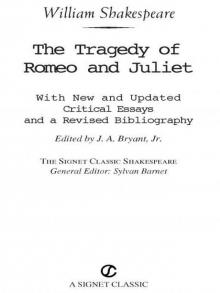 Romeo and Juliet
Romeo and Juliet As You Like It (Folger Shakespeare Library)
As You Like It (Folger Shakespeare Library)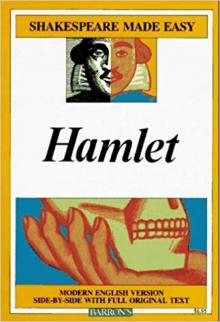 Hamlet
Hamlet Richard II (Folger Shakespeare Library)
Richard II (Folger Shakespeare Library)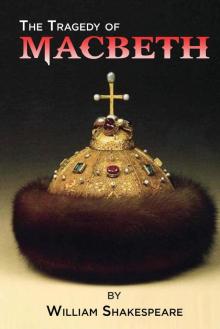 Macbeth
Macbeth Henry V
Henry V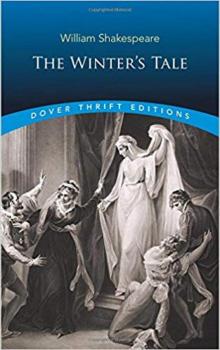 The Winter's Tale
The Winter's Tale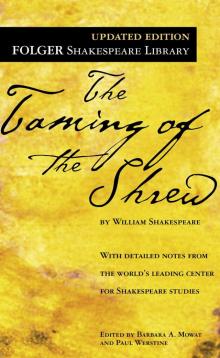 The Taming of the Shrew
The Taming of the Shrew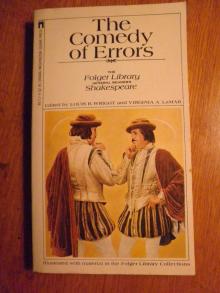 The Comedy of Errors
The Comedy of Errors King Lear (Folger Shakespeare Library)
King Lear (Folger Shakespeare Library)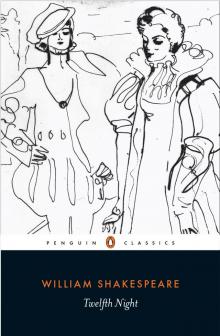 Twelfth Night
Twelfth Night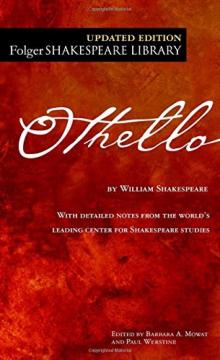 Othello
Othello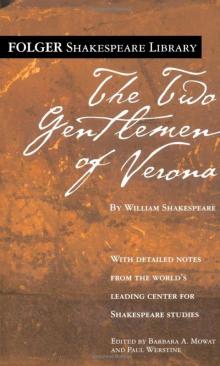 The Two Gentlemen of Verona
The Two Gentlemen of Verona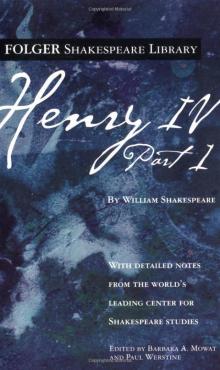 Henry IV, Part 1 (Folger Shakespeare Library)
Henry IV, Part 1 (Folger Shakespeare Library) King John/Henry VIII (Signet Classics)
King John/Henry VIII (Signet Classics)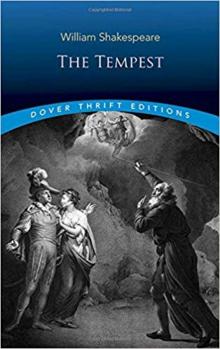 The Tempest
The Tempest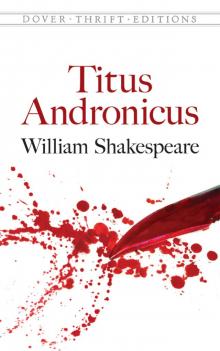 Titus Andronicus (Dover Publications)
Titus Andronicus (Dover Publications)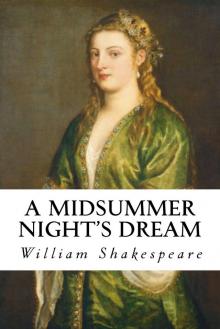 A Midsummer Night's Dream
A Midsummer Night's Dream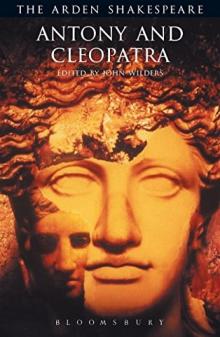 Antony and Cleopatra (Arden Shakespeare: Third Series)
Antony and Cleopatra (Arden Shakespeare: Third Series)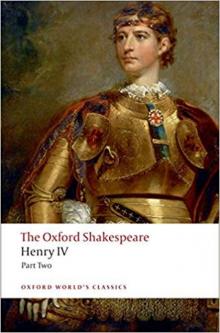 The Oxford Shakespeare: Henry IV, Part 2 (Oxford World's Classics)
The Oxford Shakespeare: Henry IV, Part 2 (Oxford World's Classics)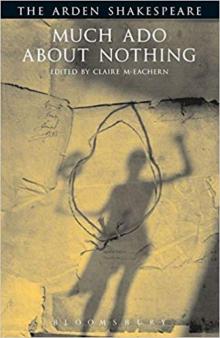 Much Ado About Nothing (Arden Shakespeare: Third Series)
Much Ado About Nothing (Arden Shakespeare: Third Series)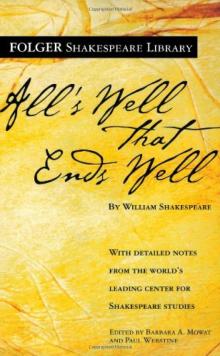 All's Well That Ends Well
All's Well That Ends Well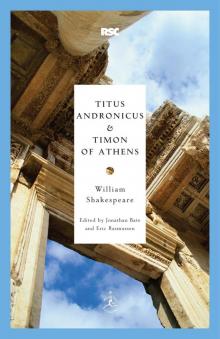 Titus Andronicus & Timon of Athens
Titus Andronicus & Timon of Athens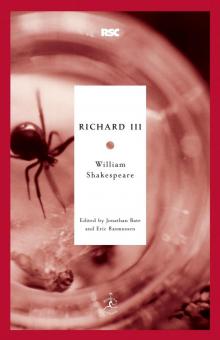 Richard III (Modern Library Classics)
Richard III (Modern Library Classics) Coriolanus
Coriolanus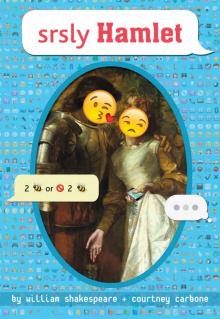 srsly Hamlet (OMG Shakespeare)
srsly Hamlet (OMG Shakespeare) The Merchant of Venice
The Merchant of Venice Richard III
Richard III Richard II
Richard II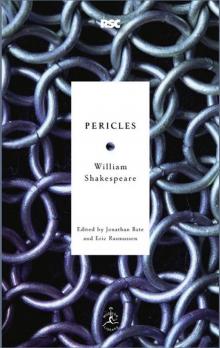 Pericles
Pericles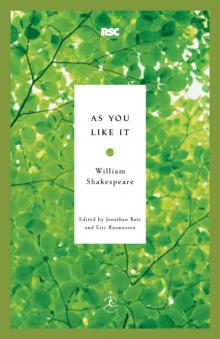 As You Like It
As You Like It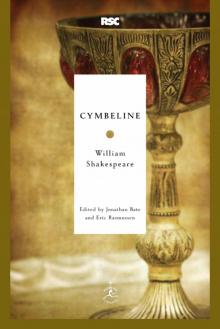 Cymbeline
Cymbeline Alls Wel that ends Well
Alls Wel that ends Well YOLO Juliet
YOLO Juliet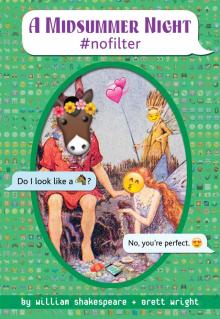 A Midsummer Night #nofilter
A Midsummer Night #nofilter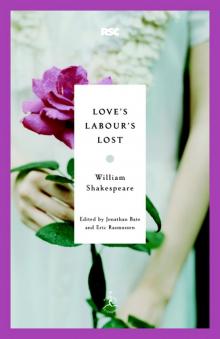 Love's Labour's Lost
Love's Labour's Lost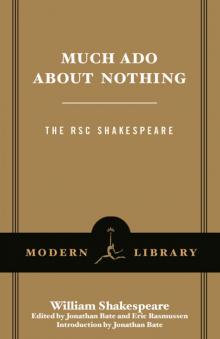 Much Ado About Nothing
Much Ado About Nothing Romeo & Juliet & Vampires
Romeo & Juliet & Vampires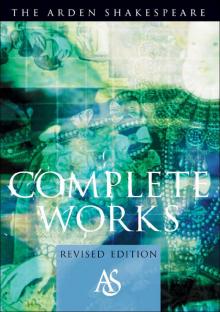 The Arden Shakespeare Complete Works
The Arden Shakespeare Complete Works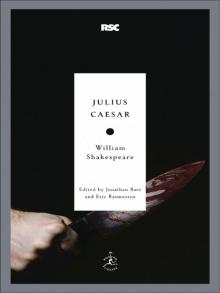 Julius Caesar
Julius Caesar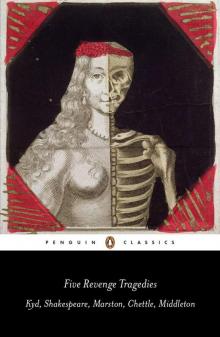 Five Revenge Tragedies: The Spanish Tragedy, Hamlet, Antonio's Revenge, The Tragedy of Hoffman, The Revenger's Tragedy (Penguin Classics)
Five Revenge Tragedies: The Spanish Tragedy, Hamlet, Antonio's Revenge, The Tragedy of Hoffman, The Revenger's Tragedy (Penguin Classics) Macbeth #killingit
Macbeth #killingit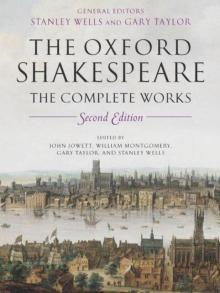 The Oxford Shakespeare: The Complete Works
The Oxford Shakespeare: The Complete Works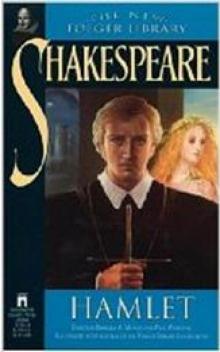 Hamlet, Prince of Denmark (Collins edition)
Hamlet, Prince of Denmark (Collins edition)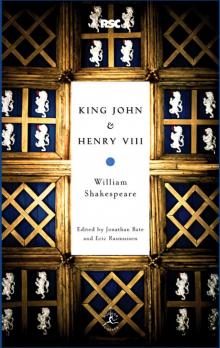 King John & Henry VIII
King John & Henry VIII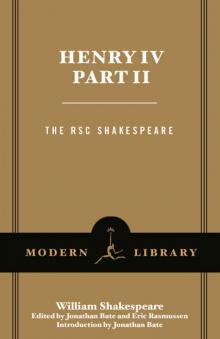 Henry IV, Part 2
Henry IV, Part 2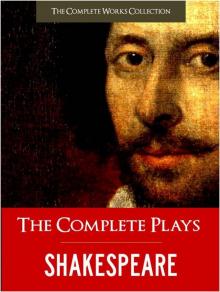 Complete Plays, The
Complete Plays, The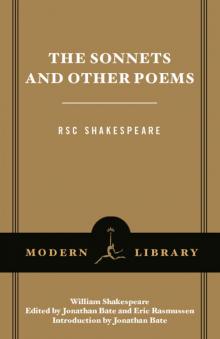 The Sonnets and Other Poems
The Sonnets and Other Poems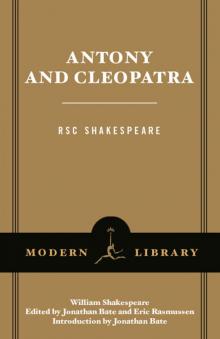 Antony and Cleopatra
Antony and Cleopatra Henry IV, Part 1
Henry IV, Part 1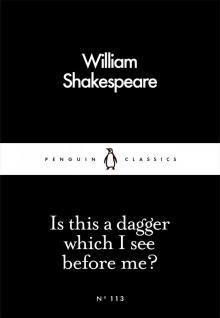 Is This a Dagger Which I See Before Me?
Is This a Dagger Which I See Before Me? The Complete Works of William Shakespeare In Plain and Simple English (Translated)
The Complete Works of William Shakespeare In Plain and Simple English (Translated)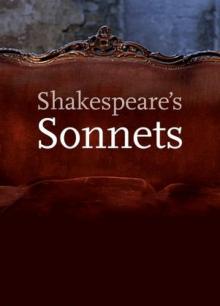 The Sonnets
The Sonnets